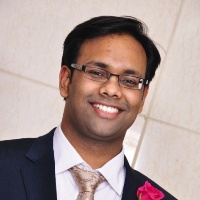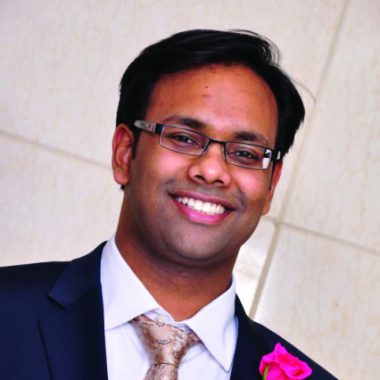
Profile: Dr Hamed Khan
Portfolio
• GP in London: 1.5 days a week
• Lecturer in clinical skills at St George’s, University of London: 2.5 days a week
• A&E GP at St George’s Healthcare NHS Trust: a seven-hour shift twice a week
Earnings
Variable
I have always had a thirst for acute medicine of some sort. I have also always been a passionate educationalist and intended to have a career that intertwined medical education with medicine, ideally as a lecturer at a medical school. Thankfully, I now have a portfolio career that combines both.
Choosing my portfolio
While doing my GPVTS I completed the whole MRCP and also worked as a locum medical registrar. When I decided to leave my partnership, I reflected and decided I wanted to continue developing my acute skills and take up a substantive position that would allow me to do this, ideally in way that would also benefit and improve my generalist holistic GP skills.
My current A&E post at St George’s Healthcare NHS Trust in London, therefore, came as something of a godsend. It combines emergency work with a significant role in working to avoid admissions, and expediting discharges into the community in way that is clinically appropriate, safe and ultimately beneficial for the patients’ continuity of care. As well as being deeply interesting, this has enhanced the hospital’s efficiency and helped me maintain and develop my clinical skills in dealing with acutely unwell patients.
I also did the two-year Academic Foundation Programme based on medical education, and also completed the Certificate in Learning and Teaching on a part-time basis. In addition, I have taken every opportunity available to build up my portfolio over the past couple of years: teaching students at my practice, examining medical students in objective structured clinical exams and even writing two medical textbooks. So when a clinical skills lecturer post was advertised at the University of London, I knew it was exactly what I had been waiting for and successfully applied. I have never looked back since.
Focus on: Becoming a portfolio GP
How to get into it
This sort of portfolio suits a GP who is able to multitask and enjoys variety. More specifically, you really need to be passionate about teaching to be a medical school lecturer, and be confident (and competent) in your acute skills to work in A&E.
With respect to A&E, the key is to gain experience, and if possible qualifications, that give you ‘street-cred’. I had done the MRCP, and also did the Advanced Trauma Life Support course. This is not essential, but was useful in my interview as I used those (in part) to prove my competency in the acute setting.
The best starting point for going into medical education at universities is to get involved in teaching. Most medical schools need undergraduate community-based tutors, or tutors for teaching clinical or communication skills as part of the central medical school programme. After that, if you’re still interested, try for formal educational qualifications, such as a postgraduate certificate in medical education or an MSc – most of these are modular and can be done part time. This will ensure you have not just a solid foundation in medical education theory, but also experience of practical teaching, meaning you are well-placed to apply for medical education posts.
There is a variety of medical education roles in universities. Central university roles include teaching fellows and lecturers, and in the community there are community-based tutors, leads for community-based teaching (for a year group, for example) and seminar leads. One of the best places to look is on universities’ websites.
The downfalls
Having to organise leave and other logistics around three different jobs is difficult. It means having to do everything immediately, as not doing so inevitably leads to lengthy delays.
The rewards
The best thing about being a clinical lecturer is the sheer enjoyment and satisfaction of teaching, and the enthusiasm and energy and appreciation of medical students. As an A&E doctor, the satisfaction comes from seeing acutely sick patients and being part of the greater movement to move care into the community where appropriate.
Overall, the main reward is variety in my career. Doing the same thing every day could easily become monotonous.
Pulse October survey
Take our July 2025 survey to potentially win £1.000 worth of tokens












